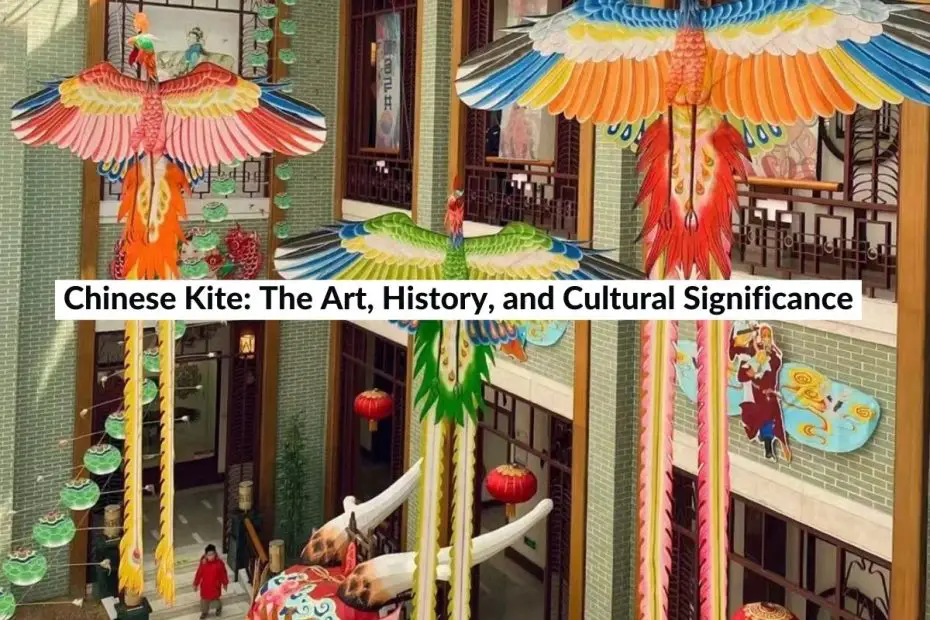Have you ever gazed at the sky and felt a pang of curiosity as a Chinese kite glides effortlessly through the air, painting the heavens with vibrant hues?
If you haven’t, you’ve been missing out on a captivating experience that combines artistry, history, and cultural significance.
I invite you to embark on a journey through the captivating world of Chinese kites, where ancient traditions come to life.
Uncover the secrets behind their creation, explore their diverse forms and symbolic meanings, and allow yourself to be swept away by the magic of these flying wonders.
Don’t let another moment pass without immersing yourself in the enchanting allure of Chinese kites. 🪁
Who Invented Kite?
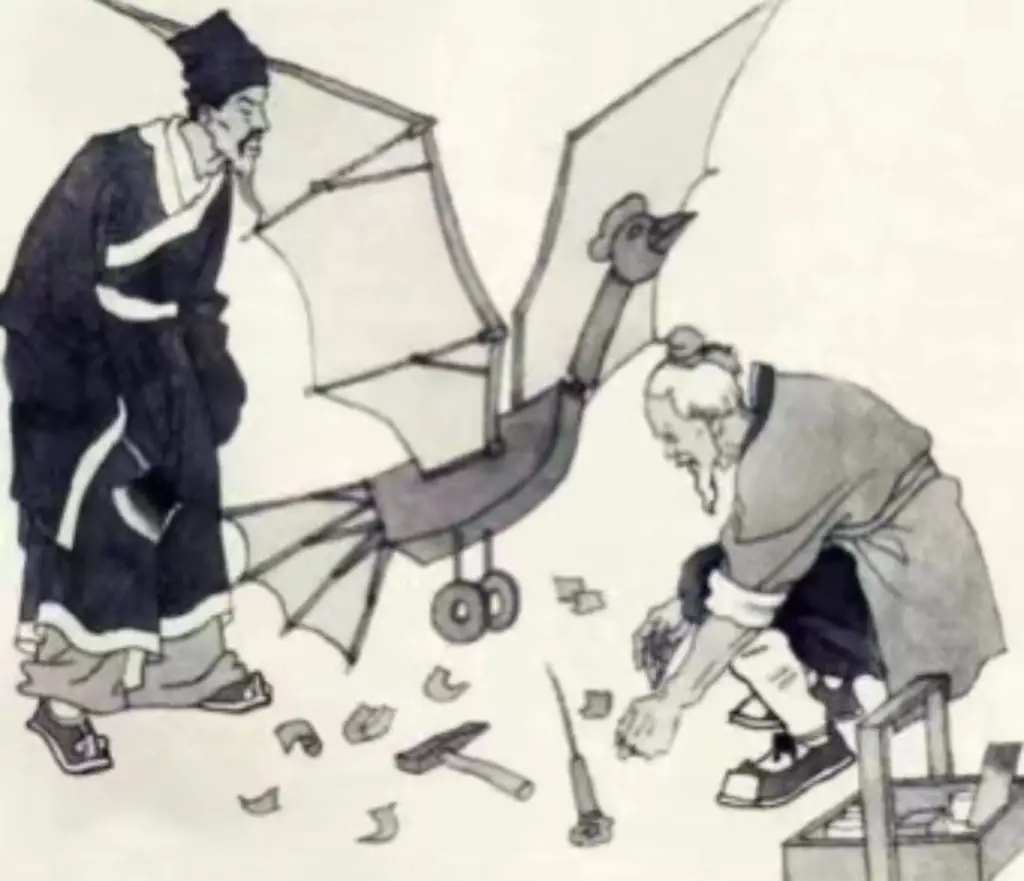
The true inventor of the kite remains unknown, and while the Chinese are traditionally credited due to their well-preserved written records, the lack of concrete evidence leaves room for speculation.
According to a popular Chinese legend, a farmer’s hat floating away while tied with a string led to the creation of the kite. Modern historians have discovered oral histories from various regions indicating independent inventions of kites around the same time as China.
Chinese philosopher Mo-tse is considered an early kite builder, but the first person to ever build a kite is still uncertain. The Festival of Ascending on High in China celebrates the joy of kite flying, while kites made their way to Europe through Marco Polo’s travels.
Kites have served military purposes, scientific experiments, and are now enjoyed as toys globally, with practical applications in fishing and aerial photography.
In conclusion, the true inventor of the kite remains a mystery, and while the Chinese have a historical connection, kites seem to have emerged independently in multiple regions, leaving the origins of this fascinating invention open to interpretation.
How To Make A Chinese Kite?
Materials Needed:
- Bamboo sticks (two long and one short)
- Thin, lightweight fabric or colored paper
- Scissors
- Glue or adhesive tape
- String or twine
- Marker or pencil
- Decorative materials (optional, e.g., ribbons, feathers)
Instructions:
- Begin by preparing the bamboo sticks. Take the two long bamboo sticks and tie them together at the top, forming a cross shape. The horizontal stick should be slightly shorter than the vertical one. Use string or twine to secure the connection tightly.
- Extend the fabric or colored paper on a flat surface. Place the bamboo frame on top of the fabric, ensuring that it aligns with the edges.
- Use scissors to carefully cut the fabric or paper along the outline of the bamboo frame, leaving a border of about 1 inch (2.5 cm) around it.
- Apply glue or use adhesive tape to secure the fabric or paper onto the bamboo frame. Start by attaching the edges, folding them over the bamboo and securing them in place. Continue around the entire frame until the fabric or paper is tightly attached. Trim any excess material if necessary.
- Next, create the bridle for your kite. Take the short bamboo stick and tie it horizontally across the vertical stick, approximately one-third of the way down from the top. This will serve as the crossbar for the bridle.
- Attach a length of string or twine to each end of the crossbar, tying them securely. These strings will be used to control the kite during flight.
- Optional: Add decorative elements to your kite. You can attach ribbons, feathers, or other materials to the tail or along the edges for a personalized touch.
- Finally, reinforce the kite’s structure by applying additional glue or tape to any weak points and ensuring that all connections are secure.
- Leave the kite to dry completely before attempting to fly it.
- When flying your Chinese kite, find an open area with steady wind. Hold the kite by the bridle strings and gently release it into the air, allowing the wind to lift it. Use the bridle strings to control the direction and altitude of the kite as it soars through the sky.
Remember to always exercise caution while flying kites, ensuring that you have enough space and avoiding power lines or crowded areas. Enjoy the experience of flying your handmade Chinese kite!
Ancient Chinese Kite
Chinese Kite History
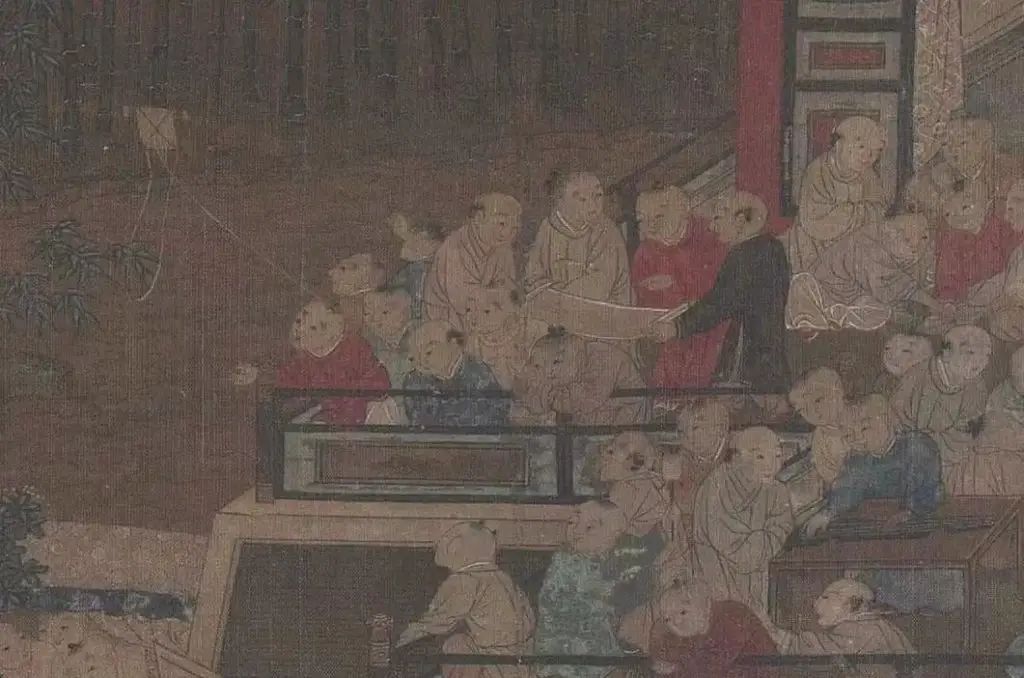
| Time Period | Key Developments |
|---|---|
| Ancient Origins | – Kites were invented around the 5th century BCE during the Warring States period. They were made of wood and silk, and had military applications such as measuring distances, signaling, and reconnaissance. |
| Recreational Use | – Over time, kites gained popularity as recreational toys. They were flown during festive occasions and celebrations, symbolizing good luck and warding off evil spirits. Additionally, competitive kite flying emerged, with participants showcasing their skills in achieving the highest altitude and performing intricate maneuvers. |
| Artistic Expression | – Kite flying became an avenue for artistic expression. People started incorporating artistic designs and decorative elements into kites, including intricate paintings and calligraphy on silk surfaces. This allowed kites to become a medium for showcasing traditional Chinese culture and aesthetics. |
| Technical Advancements | – As kite-making evolved, there were significant technical advancements. Experimentation with different materials and designs led to the transition from wood to bamboo frames and the substitution of silk with paper and fabric. Kite makers also added tails and explored various shapes and sizes to improve stability and flight performance. The invention of the rotary reel provided better control during kite flying. |
| Scientific and Military Use | – During the Han Dynasty (206 BCE – 220 CE), kites were utilized for scientific purposes. They were employed by figures like Zhuge Liang for measuring distances, wind speed, and calculating angles. In addition, kites found military applications such as message delivery, signaling, and even dropping incendiary devices or explosives. |
| Cultural Significance | – Kite flying in Chinese culture holds deep symbolism. It is associated with freedom, creativity, and harmony with nature. The act of flying a kite is seen as a connection with the heavens, bringing joy and tranquility to the participants. |
| Modern Times | – Kite flying continues to be popular in contemporary China. There are kite festivals and competitions that showcase elaborate designs and maneuvers, keeping the tradition alive. Alongside the preservation of traditional techniques, modern materials like synthetic fibers and lightweight frames have been adopted to enhance kite performance. |
| Global Influence | – The influence of Chinese kites has extended beyond China, inspiring designs in other cultures. Additionally, the concept of flying kites has served as inspiration for scientific advancements in various fields. |
| Current Significance | – Kites are treasured as cultural treasures and remain a symbol of Chinese ingenuity and artistic expression. They hold a special place in Chinese culture and continue to be celebrated and appreciated for their historical and cultural significance. |
Speaking of recreational use, Learn about the biggest kite festival in China 🔥Ancient Chinese Kites Facts
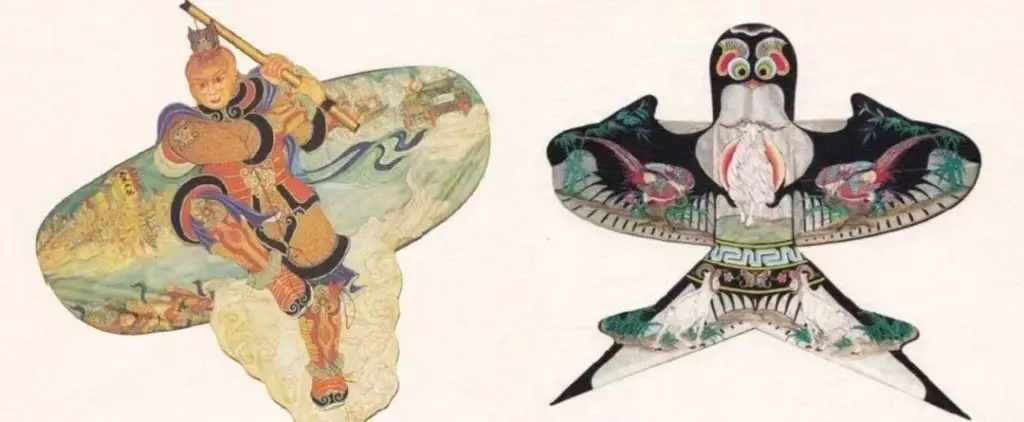
| Fact | Description |
|---|---|
| 1. Invention | – Kites were invented in China about 2,300 years ago during the Warring States Period (475–221 BC). |
| 2. Military Use | – Kites were initially used to provide intelligence for Chinese military forces, measuring distances and recording wind readings. |
| 3. Types of Chinese Kites | – Centipede kites: Iconic and popular kite forms resembling centipedes with dragon heads. – Hard-winged kites: Represent winged animals. – Soft-winged kites: Have rigid upper rims and flowing lower sections. – Flat kites: Simple diamond or square-shaped beginners’ kites. |
| 4. Longest Airborne Kite | – In 2015, a 6,000-meter long dragon kite flown in Chongqing set the Guinness World Record for the longest kite flown. |
| 5. Symbolism in Chinese Kites | – Chinese kites are associated with celebrations and cultural symbolism, often featuring shapes and colors with specific meanings. |
| 6. Kites to Drive off Bad Luck | – During the Qing Dynasty, kites were flown to drive away personal bad luck and ensure improved health. |
| 7. Kite Flying during Tomb Sweeping Day | – Kite flying is a common activity during the Qingming Festival, also known as Tomb Sweeping Day, in China. |
| 8. Marco Polo’s Account | – Marco Polo allegedly witnessed the flying of a manned kite in Weifang, China, and noted its connection to maritime fortune. |
| 9. Weifang: World Capital of Kites | – Weifang, Shandong Province, is known as the World Capital of Kites and hosts the International Kite Festival annually. |
| 10. Weifang Kite Museum | – The Weifang Kite Museum displays 2,000 international kites from around the world, covering 2,000 square meters of exhibition space. |
This table presents a concise overview of interesting facts about ancient Chinese kites, highlighting their invention, military use, types, records, cultural symbolism, and notable locations associated with kites.
What Were Ancient Chinese Kites Used For?
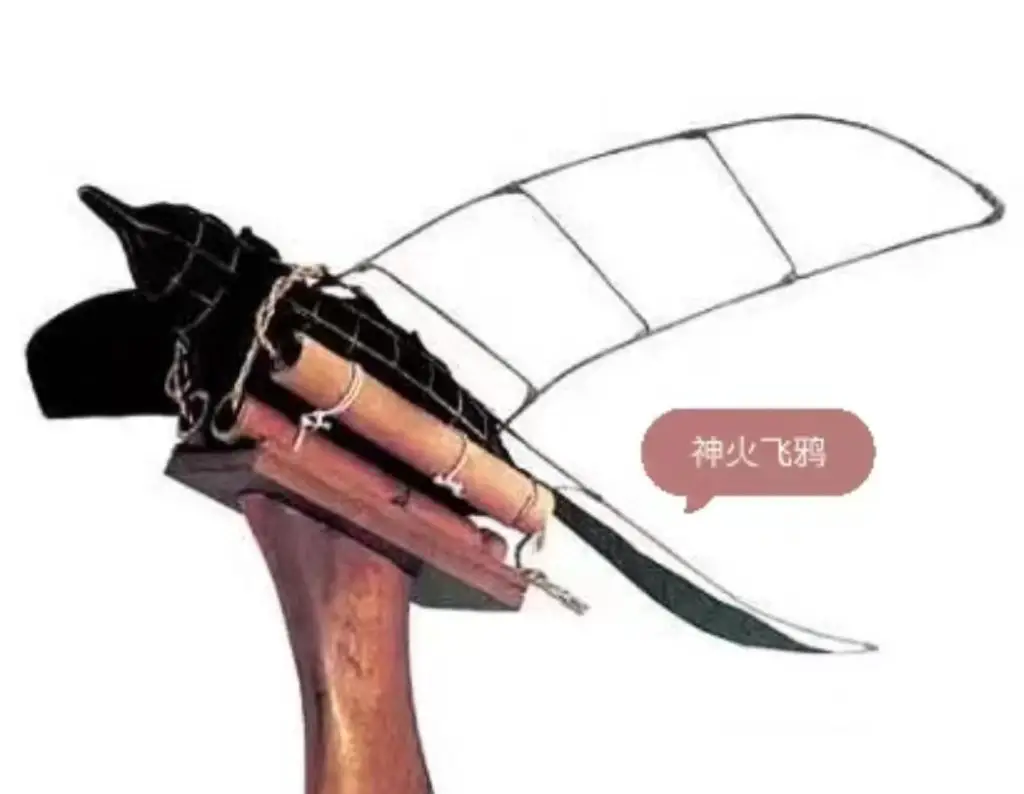
| Purpose | Description |
|---|---|
| Military Signaling | Kites were used for communication and coordination during warfare. |
| Measuring Distances | Kites aided in measuring heights and distances for mapping and surveying purposes. |
| Weather Forecasting | Observing kite behavior helped predict approaching weather conditions. |
| Agriculture | Kites were used to scare birds away from crops, protecting agricultural fields. |
| Religious and Festive Celebrations | Kites had symbolic significance in religious ceremonies and were flown during festive celebrations. |
| Entertainment and Recreation | Kite flying served as a recreational activity, with competitions showcasing skill and creativity. |
What Were Ancient Chinese Kites Made Of?

| Material | Description |
|---|---|
| Silk | Lightweight and durable fabric used for the kite’s covering. Allowed for intricate designs and patterns. |
| Bamboo | Primary material for the kite’s framework. Its strength, flexibility, and abundance made it an ideal choice. |
| Paper | Used for smaller and simpler kite designs. Lightweight, easy to fold, and suitable for painting or writing on the surface. |
| Wood | Occasionally used as an alternative to bamboo for the kite’s frame. Hardwoods like pine or paulownia were commonly utilized. |
| Silk/Cotton Thread | Strong thread used to connect the framework and secure the coverings. Provided stability during flight. |
| Glues/Varnishes | Natural adhesives and coatings used to reinforce joints and protect against moisture. Examples include rice paste, animal-based glues, lacquer, or oils. |
The table highlights the various materials used in constructing ancient Chinese kites, including silk, bamboo, paper, wood, silk/cotton thread, and glues/varnishes. Each material played a specific role in creating lightweight and durable kites, showcasing the ingenuity and resourcefulness of ancient Chinese kite makers.
Ancient Chinese Kite Designs
Chinese Dragon Kite
Step 1: Gather the necessary supplies. You will need colored paper (approximately 60cm long and 8cm wide), gel or felt-tip pens, a dragon head template, colored pencils, tissue paper or ribbon, tape, and a string.
Step 2: Cut the colored paper into a strip. Aim for a length of around 60cm and a width of 8cm.
Step 3: Fold the paper strip forwards and backwards to create a zigzag pattern. Make small sections while folding.
Step 4: Decorate the paper strip using gel or felt-tip pens. Let your creativity shine by adding any patterns or designs you like.
Step 5: Select a dragon head template and decorate it using colored pencils. Add vibrant colors to bring your dragon to life.
Step 6: Carefully cut out the dragon head template. Attach it securely to one end of the paper strip using glue or tape.
Step 7: Prepare the kite’s tail. Cut several lumps of tissue paper or ribbon. Attach them to the other end of the paper strip using tape or glue. This will create a visually appealing tail for your dragon kite.
Step 8: Attach a length of string to the front of your kite using tape. The length of the string is entirely up to you, depending on how high you want your kite to fly.
Step 9: Congratulations! Your Chinese dragon kite is now ready. Take it outside to an open area, hold onto the string, and let it soar through the sky. Enjoy the mesmerizing sight of your dragon kite flying gracefully.
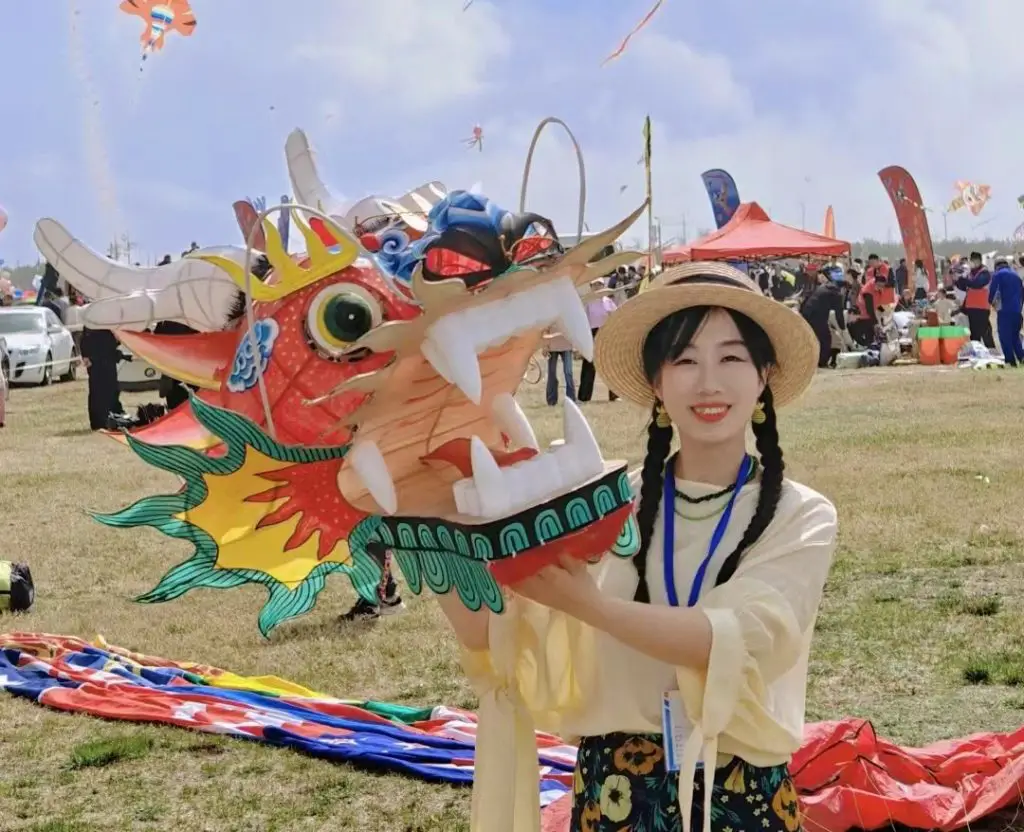
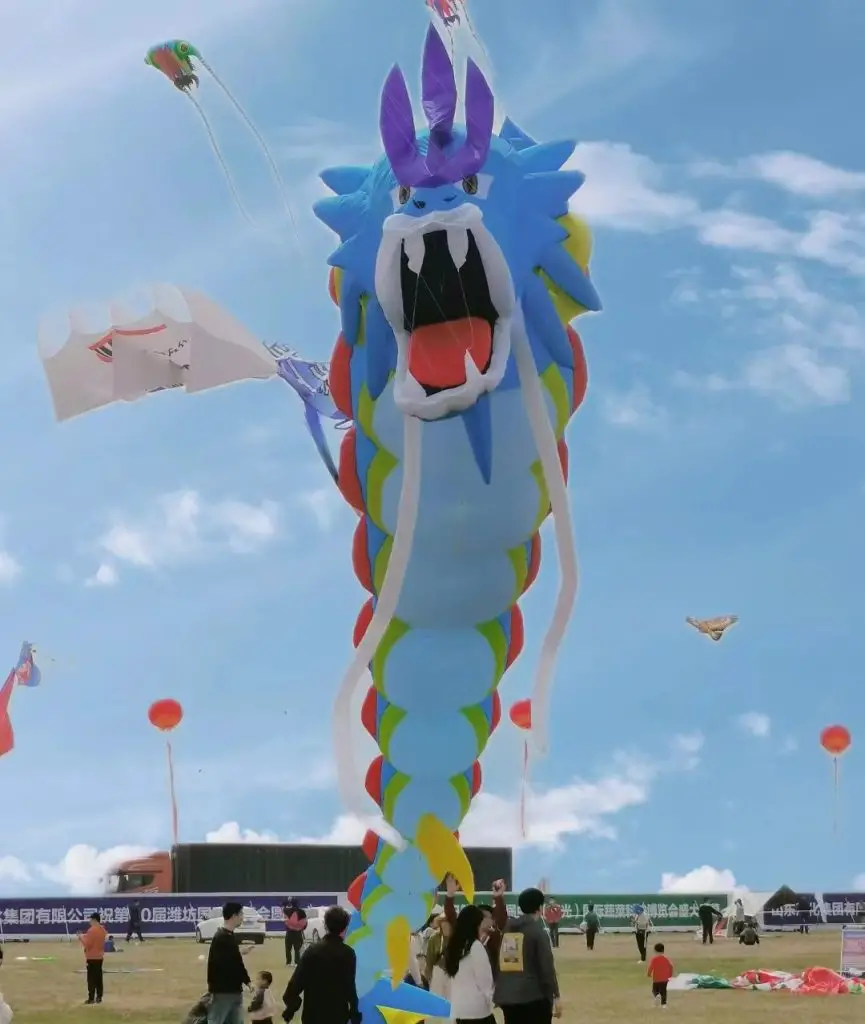
Chinese Butterfly Kite
The Chinese butterfly kite is a delicate and graceful creation. Mimicking the beauty of real butterflies, these kites are often made with lightweight materials such as silk and bamboo. When flown, the butterfly kite dances with the wind, enchanting spectators with its elegance.
This is my choice of deisgn when I was a kid. We had 3 butterfly kites at home and flew in the park at the beginning of spring. 💗
Chinese Box Kite
A box kite works by utilizing the principles of lift, stability, and aerodynamics. Its box-like framework, made of lightweight materials, provides stability and rigidity to the kite. When wind blows against the front face of the box kite, it creates a higher air pressure, resulting in lift that pushes the kite upward.
The box structure and the distribution of air pressure around the kite help maintain its position in the air, while vertical or diagonal spars within the framework prevent excessive rolling or spinning.
Long tails attached to the kite provide drag, stabilizing the kite and preventing rotation or tipping. Additionally, a keel may be present to enhance stability. Control is achieved through manipulation of the kite’s flying line, allowing the flyer to adjust the tension and angle, enabling the kite to ascend, descend, turn, or maneuver in the sky.
Through these mechanisms, a box kite achieves sustained flight and maneuverability in various wind conditions.
Chinese Fish Kite
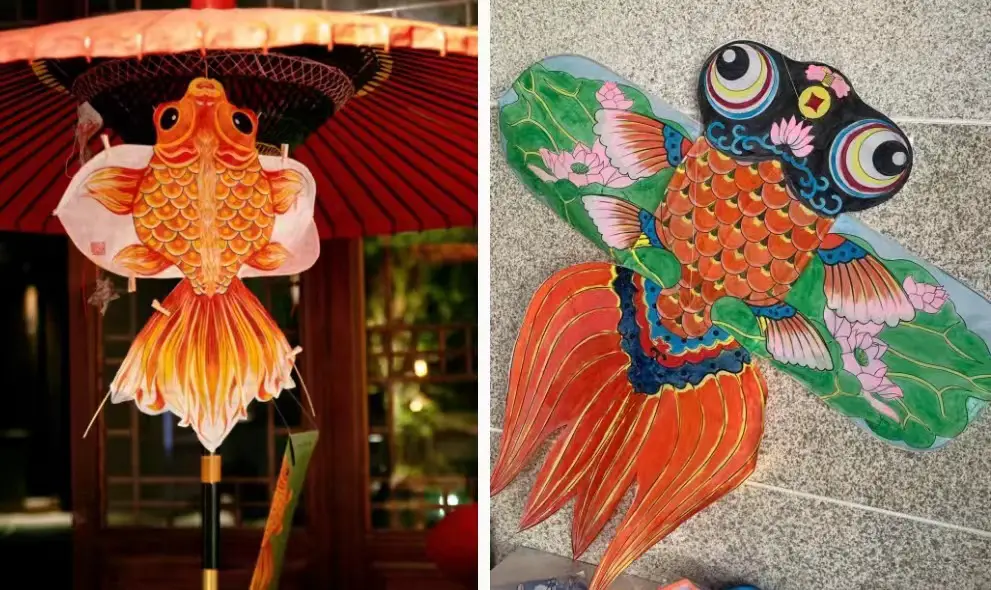
FAQs:
What is a Chinese kite?
A Chinese kite is a traditional flying object consisting of a lightweight frame covered with paper or fabric. It is flown in the air using a string or line.
What are Chinese kites called?
Chinese kites are called “Fengzheng” or “Yuan.” “Fengzheng” refers to the common diamond-shaped kites, while “Yuan” refers to round-shaped kites.
What are the different types of Chinese kites?
- Centipede-Kites.
- Hard-Winged-Kites.
- Soft-Winged-Kites.
- Flat-Kites and.
- Mini-Kites.
